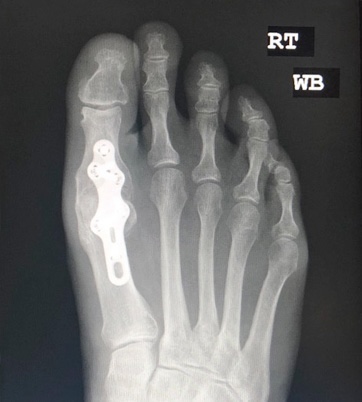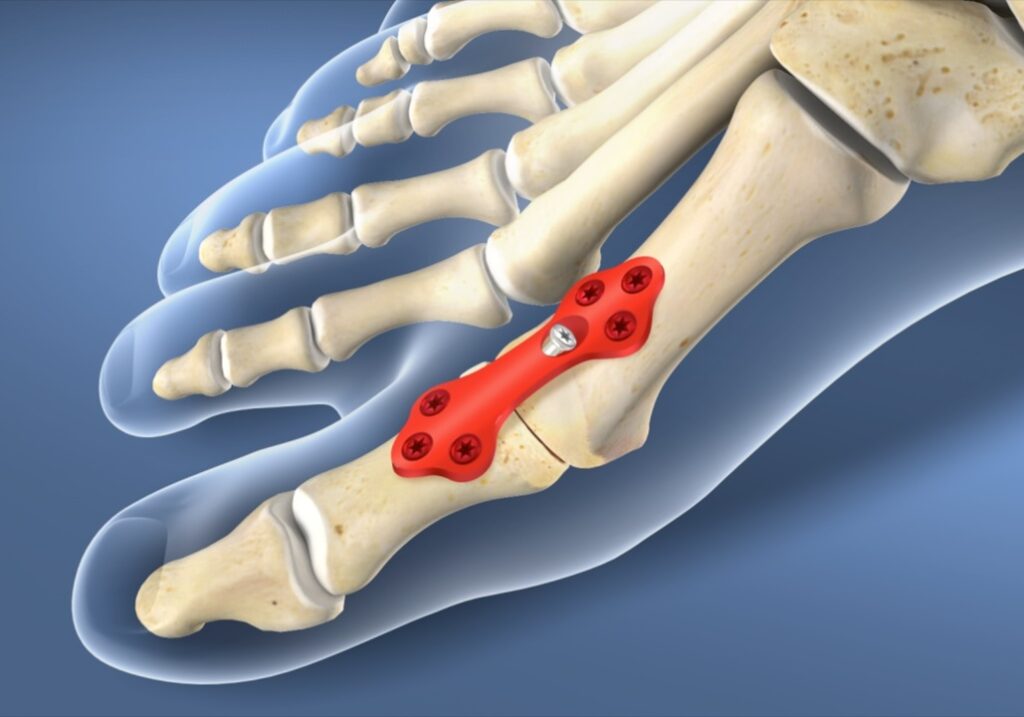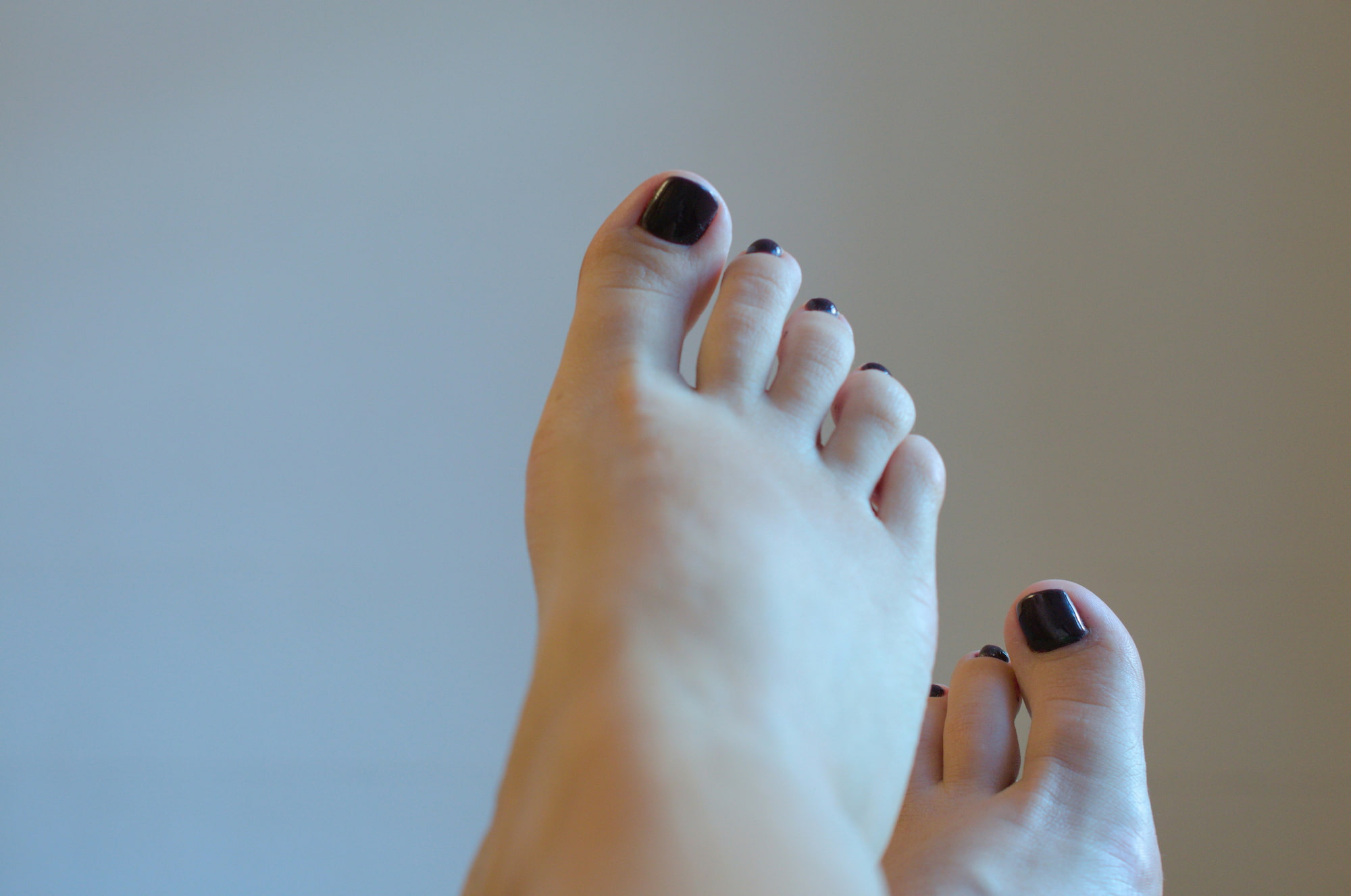Indications for surgery
Big toe fusion, or 1st MTPJ (metatarsophalangeal joint) fusion, is a highly effective surgical procedure for alleviating pain and restoring function in individuals suffering from big toe arthritis or related conditions. Surgery is typically recommended for individuals experiencing:
- Severe pain, stiffness, or swelling in the big toe joint that doesn’t improve with non-surgical treatments
- In some cases, fusion is performed to correct deformities while addressing joint damage
- Difficulty walking, standing, or engaging in daily activities due to joint pain
If your symptoms significantly impact your quality of life and conservative measures like medication, physiotherapy, or orthotics have been ineffective, big toe fusion might be a suitable option.
If you have diabetes, your sugars need to be well-controlled prior to considering any fusion surgery. You will also need to be smoke-free as smoking will impair the ability of the two bones to fuse together. Read more about big toe arthritis below:
What the surgery involves
The procedure, which ensures a stable joint and long-term pain relief, is performed under general anaesthetic, often complemented by a local anaesthetic block for pain relief. During the surgery:
- An incision is made over the big toe joint
- The damaged cartilage and bone surfaces are removed
- The bones are positioned correctly, and any deformities, such as bunions, are corrected
- A plate and screws are used to securely hold the bones together while they heal and fuse


What to expect after surgery
Recovery begins immediately after surgery, with several stages to monitor healing. The local anaesthetic block provides relief for up to 12 hours post-surgery. Most patients transition from strong painkillers to mild analgesics like paracetamol within the first week. The dressings must remain intact and dry until your follow-up appointment two weeks post-surgery.
During this initial phase, it’s essential to rest, elevate the foot (“toes above the nose”), and avoid placing unnecessary weight on the affected area. Following surgery, you’ll wear a specially designed velcro post-operative shoe for about six weeks to protect the surgical site. This shoe also allows you to bear weight and walk shortly after the procedure.
See the full rehabilitation protocol below:
How long will you need to stay in hospital?
Big toe fusion is a day-case procedure, meaning patients go home the same day.
Usual recovery timeline
Recovery from big toe fusion surgery is gradual and varies by individual. Here’s a general timeline:
- First 2 weeks: Keep the foot elevated to reduce swelling. Your stitches or dressings will be reviewed and removed at your follow-up appointment. You will wear a velcro sandal to support the foot while walking.
- 3–4 weeks: Continue using the supportive sandal, swelling will begin to subside
- 6 weeks: Light, low-impact activities like swimming or using an elliptical trainer may be possible
- 12 weeks: Most patients can resume normal activities, including higher-impact sports
- 6 months: Full healing is typically achieved, with the joint completely fused and swelling resolved
Patients can generally return to office work after 2–3 weeks, while those with physically demanding jobs may require up to 8-12 weeks off.
Potential risks
- Post-surgical swelling may take 6-12 months to settle completely after foot surgery
- A 5–10% risk of incomplete fusion may require revision surgery, with higher risk in smokers
- Weight transfer changes can occasionally cause pain under the second toe, which may need further surgery
- Metal screws or plates might require removal if they cause discomfort
- Surgery risks nerve damage, potentially causing numbness, which may persist
- Minor infections are typically treated with antibiotics, but deeper infections may need additional surgery
- Rare but possible clots in the leg or lung despite preventive measures
Is surgery right for you?
Choosing to proceed with big toe fusion surgery is a personal decision that deserves careful consideration. Take the time to weigh your options, consult with Dr Lambers, and ensure you’re fully informed about the procedure, its benefits, and potential risks. There’s no need to rush.

